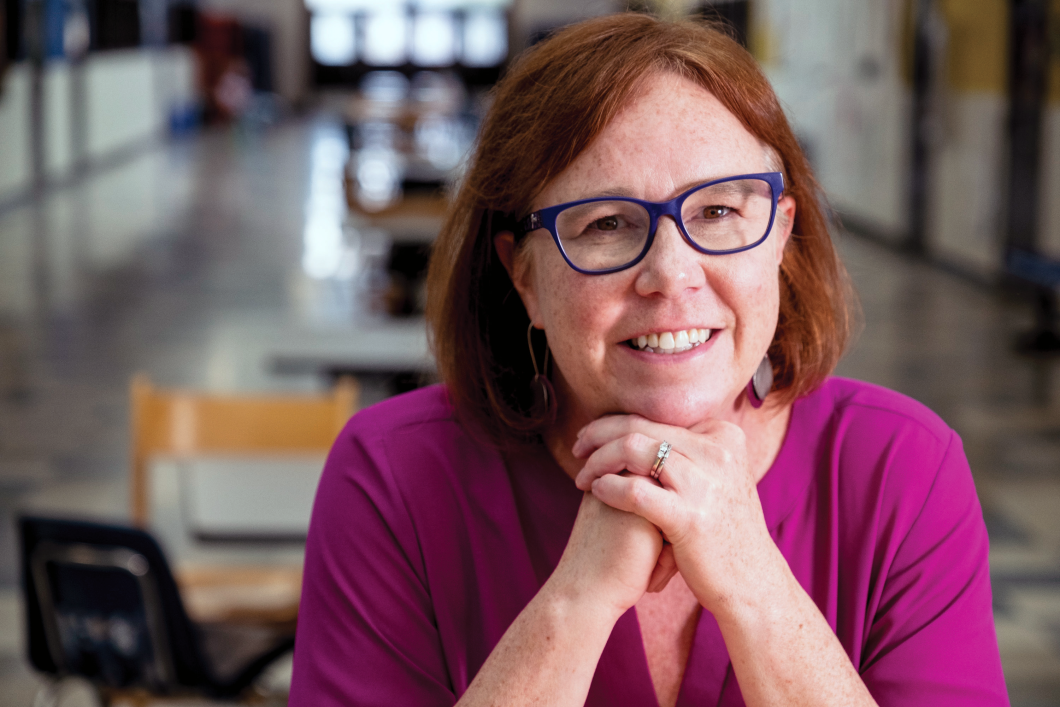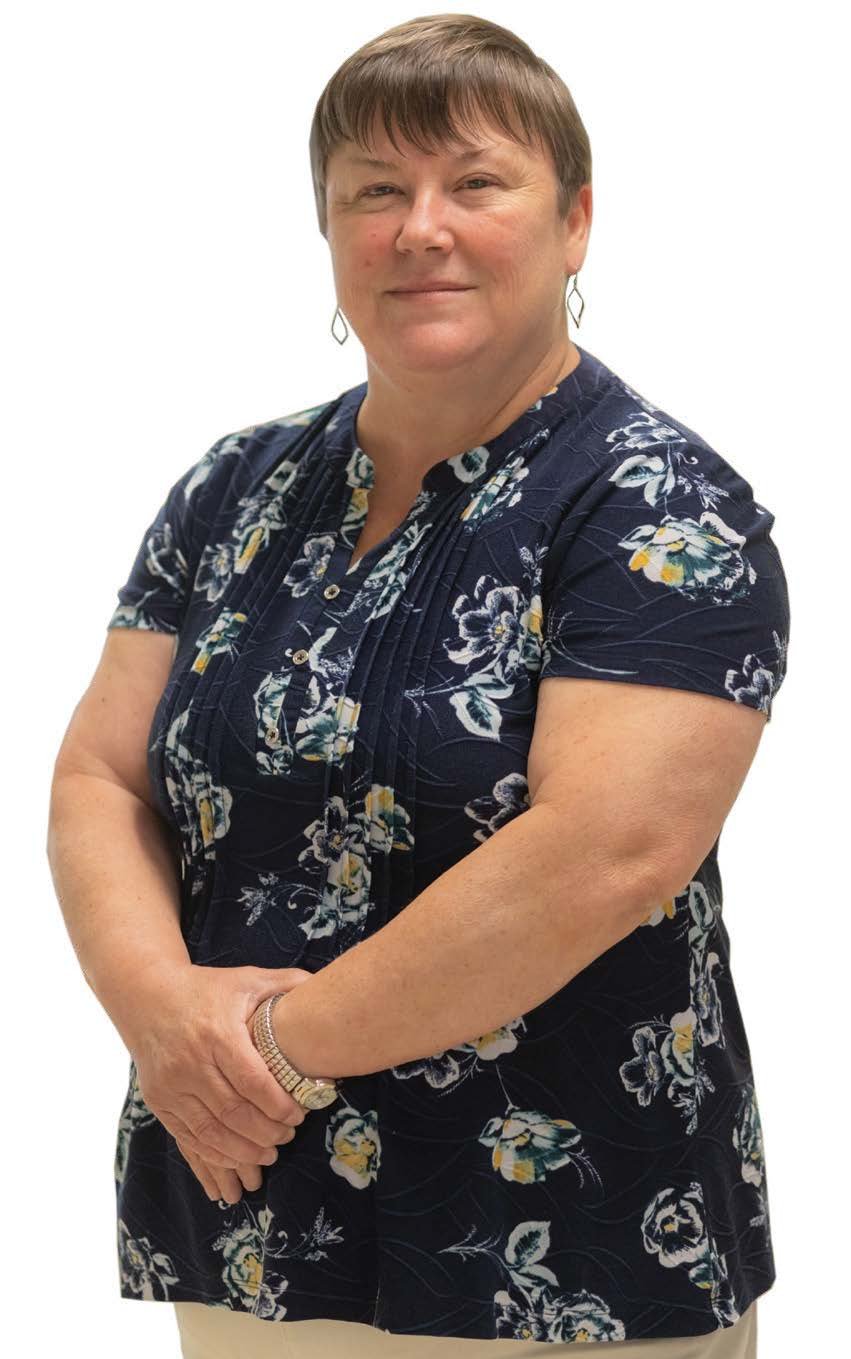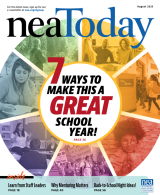About 20 new educators joined Big Sky High School in Missoula, Mont., last year. The question is: How many will return this year?
Retirements are up. So are I-can’t-take-this-anymore resignations. Across the nation, the shortage of educators is a “five-alarm crisis,” says NEA President Becky Pringle.
But, in Missoula, a union-district partnership is working to retain educators for the long run. Originally funded through an NEA Great Public Schools grant for $578,008, the project provides intensive one-on-one support to new teachers by trained mentors
“The ultimate goal is to keep them in the profession,” says Mary Lyndes, a mentor in the district who has taught and coached teachers and paraeducators for 38 years. “They come in with so much energy—they want to save the world! But they can’t do it without support.”
‘It’s Become so Much Harder’
The list of what new teachers need to know includes: How to get email; how to create a class website; how to set up the classroom, including small-group work areas. Where do supplies go? (What happens when you run out?) How do you sign up for the computer lab? (And what happens when you break something in it?)
And then there’s the big stuff: Lesson plans that reflect district and state standards; a plan for classroom procedures and behavior management; and more.
“It’s become so much harder to teach,” says Lyndes. “Back in the day, we used to just shut the door and figure it out. That’s just not possible for new teachers today.”
To help new educators navigate this world, the district’s mentors rely on resources developed through the NEA grant by project leaders Brandy Thrasher O’Neill and Angela Knieper. Throughout the year, Thrasher O’Neill and Knieper also bring together mentors and mentees for at least eight 90-minute workshops.
Their focus? Mostly the Danielson Framework for Teaching domains: planning; classroom environment; instruction; and professional responsibilities. Meanwhile, mentors and mentees meet every week or so.
The Power of Positivity

“My philosophy is not just to ‘fix the teacher,’” says Noel Nesmith, an instructional coach and mentor at Big Sky. “[It’s] much more student-based. It’s what do I want them to learn, and how do I want them to learn it? I’m here to provide teachers with the support to be successful.”
Nesmith visits her mentees’ classrooms—not to evaluate them, but to observe and advise, often through leading questions.
“My feedback tends to things like, ‘That was a great intro, you hooked the kids, and I could see the objective. How do you know they got it? What are your checks for understanding? And what [will you] do tomorrow to review what they learned today?’”
Every mentee is different. Some need help with classroom management; others with work-life balance. Some learn through role-playing with a mentor. Others may need to co-teach a lesson. But every mentor-mentee relationship must be rooted in trust, so that mentees can freely share their struggles, and mentors can respond honestly.
“You come out of college thinking you can do anything. Well, you can’t!” Lyndes says. “I help them accept that if they fall on their face, it’s OK.”
Are You a Marigold?
Mentorship isn’t the only answer to retaining educators. How about better pay? But Missoula’s mentors believe they’re having an impact.
“I can certainly say that [new] teachers are more successful and less frustrated because they have somebody to go to,” Lyndes says.
Thrasher O’Neill calls it the “marigold effect,” a phrase used in education and business. Just as home gardeners grow marigolds to protect other plants from weeds and diseases, the Missoula project plants mentors to nurture new teachers and support their development.
And, as it turns out, they’re not the only ones who benefit. It’s authentic collaboration. Lyndes notes, “It’s a two-way street. I get a lot out of it.”
“[New teachers] come in and they’re like, ‘Yeah, I’ll try that!’” says Nesmith, who is entering her 19th year in the profession. “For me, that fills my cup. I feed off their energy and enthusiasm and willingness to try new things.”
Do you have what it takes to be a mentor? Here are a few essential qualities:
Meet Tami Ainsworth, Super-Mentor

Thirty-five years ago, when Ainsworth first started working in Lebanon, Ore., as an instructional assistant, she didn’t have a mentor. Today, many of her newest colleagues are lucky to have a great one—it’s Tami Ainsworth.
Three years ago, with support from NEA, the Lebanon Education Support Professionals Association (LESPA) launched a mentoring program. Their goal? To ensure new employees have the support they need to persist in their jobs.
“A lot of us had horrible experiences, and we were like, we don’t want anybody to live through that!” says LESPA President Laura Warren.
Today, the program matches a trained mentor with every new staff member, including paraeducators, bus drivers, and others. The pairs meet 10 times a year. Mentors are paid for their time, and mentees are required by the district to attend. In 2022 – 2023, LESPA’s 30-plus mentors supported about 64 new colleagues.
Trust is Key
Ainsworth covers a variety of assigned topics during these meetings, even the union contract.
“People don’t under-stand we have six sick days, three personal days,” she says. She also explains how professional development through NEA micro-credentials can lead to increased pay.
More importantly, she lays the groundwork for a relationship of trust. “You want to provide a place for them to ask questions, so you can guide them along the way,” she says.
Recently, a mentee told Ainsworth that she’s never been able to attend her department’s meetings, because they’re held when the mentee is off.
“Have you thought about asking if there’s another time the meetings could be held?” Ainsworth asked. That nudge was all the mentee needed. She asked, and now she is included.
“You want to provide a place for them to ask questions, so you can guide them along the way.”
Tami Ainsworth, instructional assistant, in Oregon
Another said, “I never know what I’m going to do until we start doing it.” Ainsworth suggested the mentee, an instructional aide, ask her teacher to meet for 10–15 minutes at the start of the day. “New employees don’t realize it’s OK to ask!”
The Benefits are Mutual
The 12 new staffers that Ainsworth mentored over the past three years are still in their jobs—save one who left for child care reasons. But employee retention isn’t the biggest benefit of the program. In Ainsworth’s opinion, the biggest prize is the unity created among employees.
“I’ve probably gotten as much out of this program as the mentees,” she says. “It’s enhanced my leadership skills and also allowed me to understand that we need to work together to make this a better place.”
Many mentoring programs focus on retaining new employees, Warren adds, but LESPA’s program keeps experienced staff on the job, too.
“Wages aren’t enough to hold them. This gives them a sense of pride,” she says. “I had a mentor break down in tears and tell me they got more from mentoring than their mentee! It gives [mentors] a feeling of self-worth.”
To learn more about NEA’s ESP Peer Mentoring resources, visit






